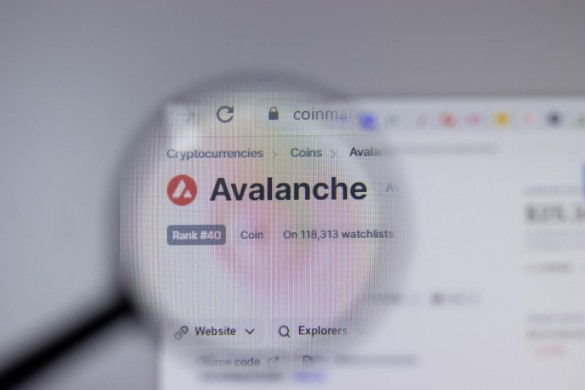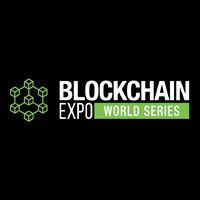Layer-1 Blockchains serve as the foundation of the digital asset ecosystem, enabling the creation of smart contracts and fostering diverse applications from finance to social media. Among these networks, Avalanche emerges as a prominent player, distinguished by its innovative subnetwork approach. Offering flexibility, scalability, and rapid transactions, Avalanche supports a broad spectrum of applications, including finance and digital collectibles. Despite market challenges, Avalanche continues to grow steadily, drawing interest from developers, users, and institutions with its distinctive three-chain setup.

Avalanche: Unraveling the Future of Blockchain
Avalanche, an innovative blockchain, revolutionizes the decentralized world with its tweaked proof-of-stake (PoS) mechanism, pioneered by the Ava Labs team in 2020. This open-source platform, compatible with Ethereum Virtual Machine (EVM), empowers developers to construct decentralized applications (dApps) effortlessly.
At its core, Avalanche stands out with its groundbreaking “Avalanche Consensus,” prioritizing scalability and interoperability in the blockchain realm.
Founded in 2018 by Emin Gün Sirer, Ted Yin, and Kevin Sekniqi—Cornell University’s professor and two doctoral students—Ava Labs brings expertise in distributed systems and cryptography to the table. Notably, Emin Gün Sirer’s 2003 paper introduced a pioneering concept for a P2P cryptocurrency, Karma, years before Satoshi’s seminal whitepaper.
The birth of the AVAX token traces back to its initial seed round in February 2019, securing $6M for 18M AVAX at $0.33 each. Subsequent private and public token sales in May and July 2020, respectively, further fueled its financial backbone, raising a total of $42M at $0.58 per token. These strategic funding endeavors solidified Avalanche’s financial standing, fortifying both the network and its native token, AVAX, for a promising future.
The Mechanics of Avalanche Consensus
Ava Labs has achieved a significant breakthrough with Avalanche Consensus, a unique and scalable protocol. Unlike traditional blockchains such as Bitcoin and Ethereum, which process transactions sequentially in blocks, Avalanche utilizes a directed acyclic graph (DAG) structure. This innovative approach allows transactions to be processed simultaneously, greatly increasing speed and throughput.
What distinguishes Avalanche is its permissionless nature, allowing for an unlimited number of validators, unlike other layer-1 solutions like Cosmos or BSC. Scalability is achieved through subsampling, reducing the number of validator votes needed for consensus. As a result, transactions are finalized quickly, often in less than a second.
In contrast to Ethereum, where communication between validators can slow down with increased participation, Avalanche’s sampling method maintains efficiency even as the validator set grows. This inclusive approach allows for permissionless participation in the validation process, ensuring that Avalanche remains efficient and accessible to all.
The Avalanche’s Subnet Dynamics
Avalanche’s architecture introduces specialized subnetworks known as ‘subnets,’ dynamic clusters of validators collaborating to achieve consensus. These subnets enable tailored networks with specific rules and functionalities to meet diverse requirements. Operating as self-governing entities within the larger Avalanche ecosystem, subnets control validator sets, execution logic, fee structures, and security protocols.
Unlike rollups, which achieve vertical scaling by segregating functions into specialized layers, Avalanche divides its main network into autonomous subnetworks responsible for managing their consensus, execution, and security, achieving horizontal scalability. This strategic division alleviates congestion by accommodating increased traffic for specific applications, providing additional block space, and segregating system load during peak demand periods.
Subnets serve as the foundation for innovative developments within Avalanche, facilitating the creation of highly specialized networks for various needs, from decentralized finance (DeFi) and gaming to private enterprise blockchains and regulatory-compliant systems. This adaptability makes subnets a favored option, particularly among traditional financial institutions.
Within Avalanche’s ecosystem, the mainnet, referred to as the “Primary Network,” operates three key blockchains:
1. X-Chain (Exchange Chain): Optimized for handling AVAX and other native asset transfers via a UTXO-based system. Developed using the Avalanche Virtual Machine (AVM) and Avalanche Consensus protocol, it employs a DAG architecture for heightened scalability.
2. C-Chain (Contract Chain): Supports smart contracts and DeFi applications utilizing the Ethereum Virtual Machine (EVM) for compatibility. This chain hosts numerous applications like Aave and Trader Joe and operates on the Snowman Consensus protocol, processing transactions linearly.
3. P-Chain (Platform Chain): Manages staking, platform governance, and validator activities using the Snowman Consensus protocol. Additionally, it facilitates the creation of subnets, supporting new virtual machines while incorporating specific rules and mechanisms.
Avalanche’s Fee Structure and Adoption Dynamics
Avalanche’s transaction fee model mirrors Ethereum’s EIP-1559, comprising a base fee and a priority fee (‘tip cap’). Base fees adjust dynamically based on blockspace utilization, while the priority fee allows users to expedite transactions by paying extra. Both fee types are in AVAX and are burned, boosting AVAX’s value by reducing its supply.
On the C-Chain, mean fees have hovered around $0.10 since June 2022, offering a cost-effective option compared to chains with higher fees. However, increased usage led to total fees reaching $10.5M, with average fees peaking at $1.7 in December 2023, highlighting the impact of heightened demand on costs. In contrast, the X-Chain has maintained mean transaction fees under $0.05, making it ideal for managing tokens and transfers.
Fueled by its scalable, low-cost blockchain, Avalanche has gained significant adoption. In April 2023, daily active addresses surpassed 500k, coinciding with interest from major financial institutions like WisdomTree, T.Rowe Price, Wellington Management, and Cumberland. Leveraging Avalanche’s Evergreen subnet, “Spruce,” these institutions explored foreign exchange and interest-rate swap settlements, showcasing Avalanche’s appeal and potential to streamline trade and reduce costs.
Additionally, Avalanche’s involvement in “Project Guardian,” with J.P. Morgan and others, highlights its role in enabling portfolio tokenization, providing portfolio managers with access to a wider range of funds through interoperable blockchains.
Learn from market wizards: Books to take your trading to the next level.


 Hot Features
Hot Features













